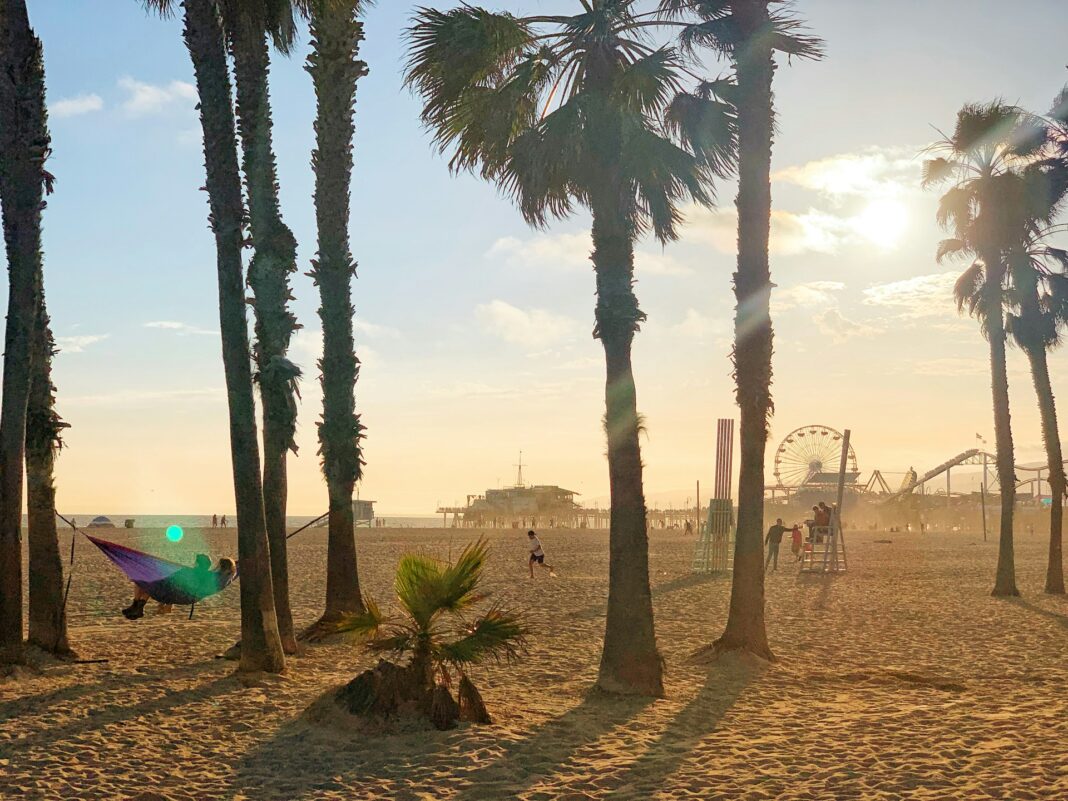SANTA MONICA—On Friday, March 15, the city of Santa Monica announced that it completed Phase 2 of the Santa Monica Beach Restoration Project Thursday, March 14 which will further restore natural dune habitat on the beach just south of the Annenberg Community Beach House.
After completing the first phase of the pilot program that restored three acres of beach dunes, the second phase aims to expand to an additional five acres of native coastal strand habitat. It included installing post, rope and sand fencing to restrict beach city-operated grooming at the site, planting seeds of California native vegetation to promote dune growth and adding interpretive signage to educate the public about the project and the environmental benefits of native coastal habitats.
The city of Santa Monica indicated in a press release that a primary focus was to advance the city’s Sustainable & Connected strategic priority, the dune restoration project combats climate change and protects coastal infrastructure and residences from sea level rise using natural barriers. The project will expand the habitat for notable native species, including the federally threatened Western Snowy Plover.
Nesting was not recorded in the Los Angeles area for over 70 years until the first nest was found in April 2017, within the site for the first phase of the project.
Before launching the second phase of the dune restoration project, staff conducted significant stakeholder engagement, with multiple public meetings in the past year to gather community input on project design and other considerations. Supporters of this project include: LA Audubon Society, Heal the Bay, Climate Action Santa Monica, LA County Beaches and Harbors, and others, along with many Santa Monica residents. The project is funded by the Bay Foundation through the Refugio Oil Spill Trust.
The Bay Foundation (TBF) restored approximately three acres of plants adapted to live on the beach near the shoreline for the Santa Monica Beach Restoration Pilot Project. This community of plants attracted insects and birds, and adapted to the harsh conditions of beach life, including salt spray, wind, and intense sunlight.
As the plants of the coastal strand habitat grow, they capture sand beneath their branches and leaves from the wind. That builds sand dunes that prevent waves and extreme tides from flooding the beach and nearby infrastructure. By reestablishing the habitat, TBF and its partners are able to affordably create beaches that are naturally resistant to sea level rise, while creating refuge for endangered species and adding natural beauty to our beaches.
Scientific monitoring of the pilot project is being used to inform other projects in development by TBF across the coast of Los Angeles County. Sea level rise and more frequently large-wave events are a result of global climate change impacting our coast. The projects together are the beginning of a significant effort to locally adapt to climate change. The goal is to preserve beaches in the region and provide protection against climate change. To read about the Beach Dune Restoration Pilot, click here.






